On our recent cruise in the Mediterranean, our ship stopped at La Spezia, a small port along the western coast of Italy. It was in close proximity to Pisa and Florence, and having been to Pisa once before, we elected to take a ship’s tour to Florence. The bus ride was about two hours through the northwestern parts of the Tuscany Region of Italy and we had the opportunity to see a good deal of the Tuscan landscape. Florence, of course, plays a big part in a great deal of our modern world, but it’s almost staggering how big that part really is. It’s said that the Renaissance began there, and with great minds like Leonardo DaVinci, Michelangelo, Dante, and Galileo all hailing from this one place, it’s hard to argue to the contrary.
Florence is the capital of Tuscany, which is a Region of Italy. A Region, in case you need a refresher, is like a state, or a province. Of course, just to confuse things, a province is an administrative area inside a region, sort of like a county in the U.S. Cities are referred to as Communes for Italian administrative purposes. Got that? We’ll move on then.
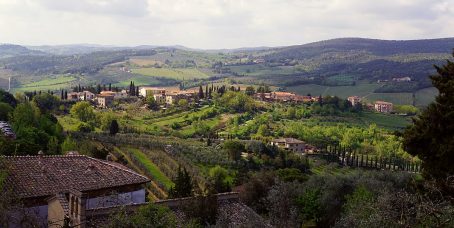
The Tuscany Landscape is not unlike that of California. Image by By Lucía García González – Tuscany, CC0, Link
The countryside in Tuscany, based on our trip from La Spezia to Florence, is not unlike California. Sort of a southern California meets the Napa Valley kind of place. With Marble Rock quarries located in the hills in the backdrop. The climate looks to be kinda dry, and there was evidence that Italy suffers the same forest fire problems that much of the western United States does. The trees tend to be smaller, but the fire danger seems to be very real. This was even more evident on our visit of Pompeii, but we’ll talk about that more in a future article.
The History
Florence goes way back. More so than many European cities, but it got its start to stardom with the Romans. When Rome took responsibility for the area, they brought in roads, aqueducts, sewers, and constructed a number of public and private buildings. The city was established in 59 AD by Julius Caesar as a military post for the Tuscan area. With the improvements from the Romans for largely military reasons, it didn’t take much time until the city began to flourish as a major commercial area too.
Rome fell in the Florence area around the 5th Century, and Tuscany reverted back to Kingdoms, but Florence continued to thrive, serving a growing travel business as a major stopover point for people traveling from Rome to France.
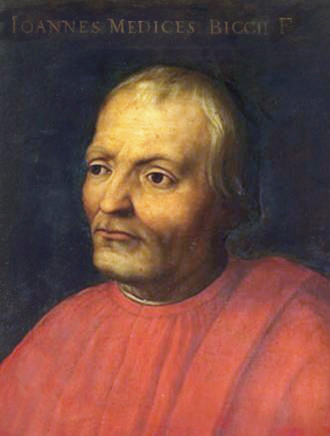
Giovanni di Bicc de’ Medici, founder of the Bank of Medici. By Cristofano dell’Altissimo – Palazzo-Medici.it, Public Domain, Link
More or less concurrent with the Renaissance—which began in Florence—was the rise of the House of Medici, also from Florence. The Medicis were a family of bankers that, while considering themselves “citizens” rather than royalty, were far from ordinary. They were responsible for much of the progress in Europe from the 15th century, when Giovanni di Bicci de Medici (c. 1360-1429) founded the Medici Bank. The family has a colorful and convoluted history as they intertwined their family into the most important circles in Europe along their rise to power. They managed to produce three popes, two queens, and a number of other local royal figures. Also, the family, through their bank, financed much of the progress from the Dark Ages through the Renaissance in Italy and a great deal of Europe in general.
What to see in Florence
Where do we start? First, the idea that we could come to Florence and see any significant part of the sights in an afternoon from a cruise ship was just plain silly. Florence was ground zero for the entire Renaissance. Much of what we hold as important in terms of art, music, literature, and especially science, originated here in Florence at the end of the Dark Ages. Some really important stuff happened here. And if the whole Renaissanceidea isn’t important enough, some of the most influential ideas in banking and commerce originated here in Florence with the rise of the Medici family and their world bank.
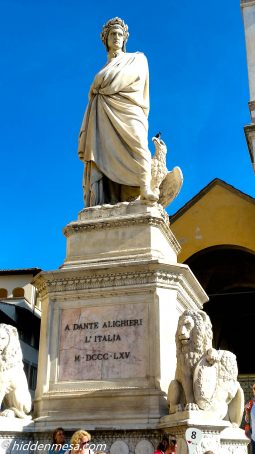
A statue to Dante who also lived in Florence sits in front of the Basilica of Santa Croce. Photo by Bonnie Fink.
Some of the important sights include the Uffizi Gallery where several important paintings of the Renaissance are displayed, or the Accademia Museum where you can see Michelangelo’s David. We enjoyed the Museo Galileo, a science museum near the Ponte Vecchio (old bridge) in the heart of Florence. It wasn’t the most popular museum in town judging by the fact that there was no line to get in, but science is our interest above art, so it was a good fit. And it was very interesting to learn that of the scientific discoveries being made as the world emerged from the Dark Ages, Florence was in the middle of the action.
Did you know that when the Church placed Galileo under house arrest for life for claiming that the universe did not revolve around the earth, he chose his home in Florence to spend the rest of his life? That’s because he had his main observatory at his Florence home, and since he was going to be under house arrest, he wanted to spend his time continuing his studies in astronomy.
You can see more about Florence in the images we have below. But the problem is, how do you prioritize your time in Florence and see the things that are the most important to you? For many people, any number of museums displaying art from the Renaissance might be important. In our afternoon of free time from our ship’s tour, we found lunch, then made our way to the Museo Galileo because we had heard that Galileo’s original telescope was there. If it was, we didn’t find it, but we found nearly every other notable astronomer’s telescope from the period in the museum. We also found a number of other scientific instruments whose purpose escaped us. We’ll need to return to spend a bit more time just to ponder the things in this one museum.

Ponte Vecchio is a medieval stone arch bridge over the Arno River, built in 1345. When it was built it housed fish and meat markets. Today it consists of jewelry vendors. There’s an interesting story about the bridges over the Arno River in Florence. There are several versions of exactly why the Ponte Vicchio was spared destruction by the retreating German army in world War II, but the fact remains that it was the only medieval bridge to be left standing after the war. Photo by Donald Fink.
One way to see Florence might be to consider a private guide. We had a guide that took us from the ship and around Florence. Her name was Valentina Bassi, and we learned that she also has a private tour business, giving custom designed individual or small group tours of Florence and Pisa. Her web site is at www.florenceandpisatours.com. We plan to re-visit Florence one day in the future, and we think an ideal plan, at least for us, would be to contact Valentina and tell her what we want to see, and arrange for our first day as a private tour with her. We could then plan subsequent visits by ourselves as follow-ups.
The point in using a tour guide to show you the sights is not that we think we need someone to hold our hand as we make our way through the city, but rather, the fact is that a competent guide—as Ms. Valentina most certainly is—has literally years of experience seeing the sights. She has knowledge that would take us time to uncover, and she possess anecdotal stories that we might not ever discover on our own.
Florence today continues to be an interesting center for art, architecture, engineering, or just about any emerging field of study, but for us, that’s not the reason we want to visit again. The history is so full of colorful stories, and so many of the things we’ve heard about all our lives originated in this historical city, it’s rewarding and fun to be able to come here and see where many of them started.
If you have a chance to visit Florence, whether it’s a destination or just a day visit from a passing cruise ship, this is one stop not to miss.


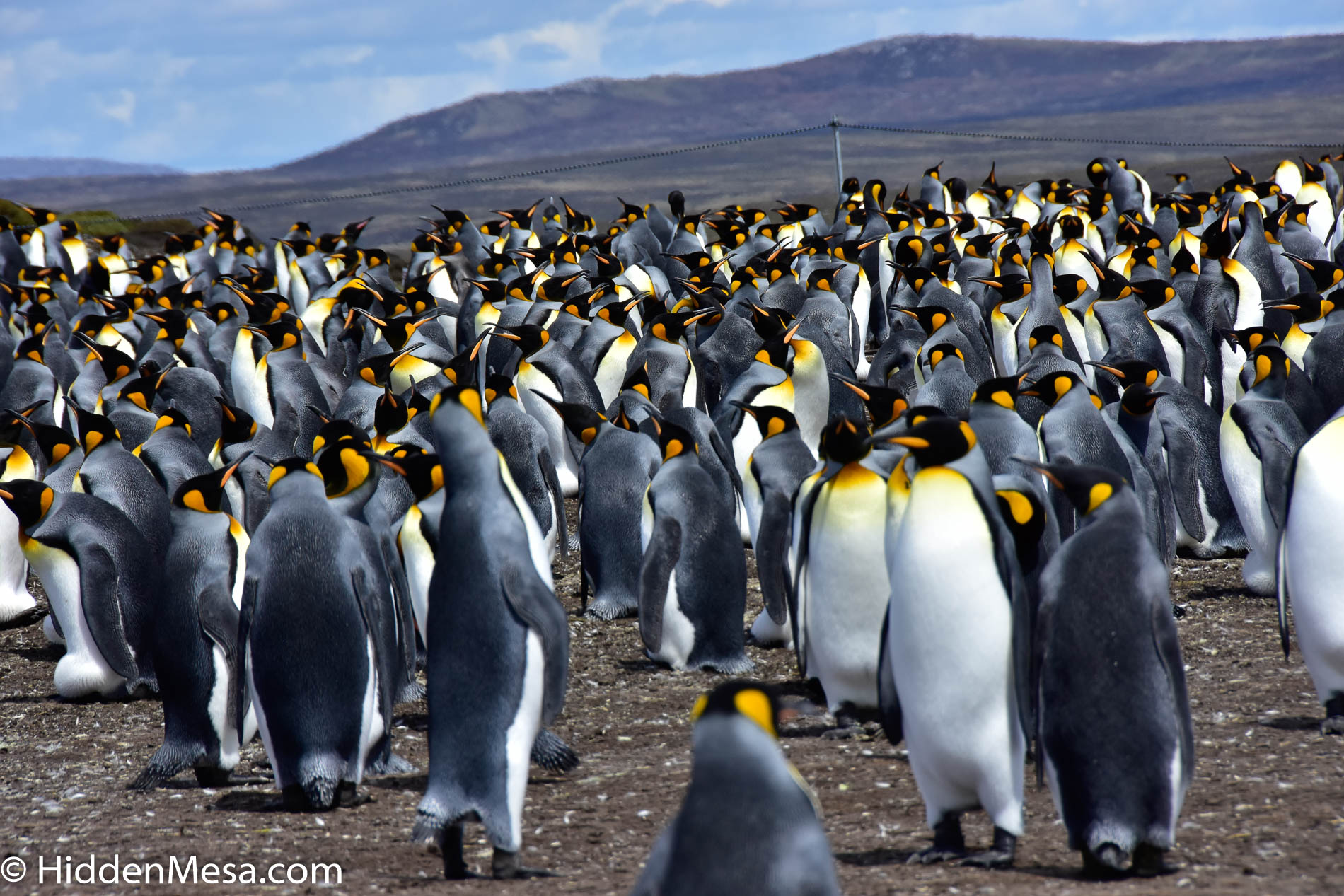
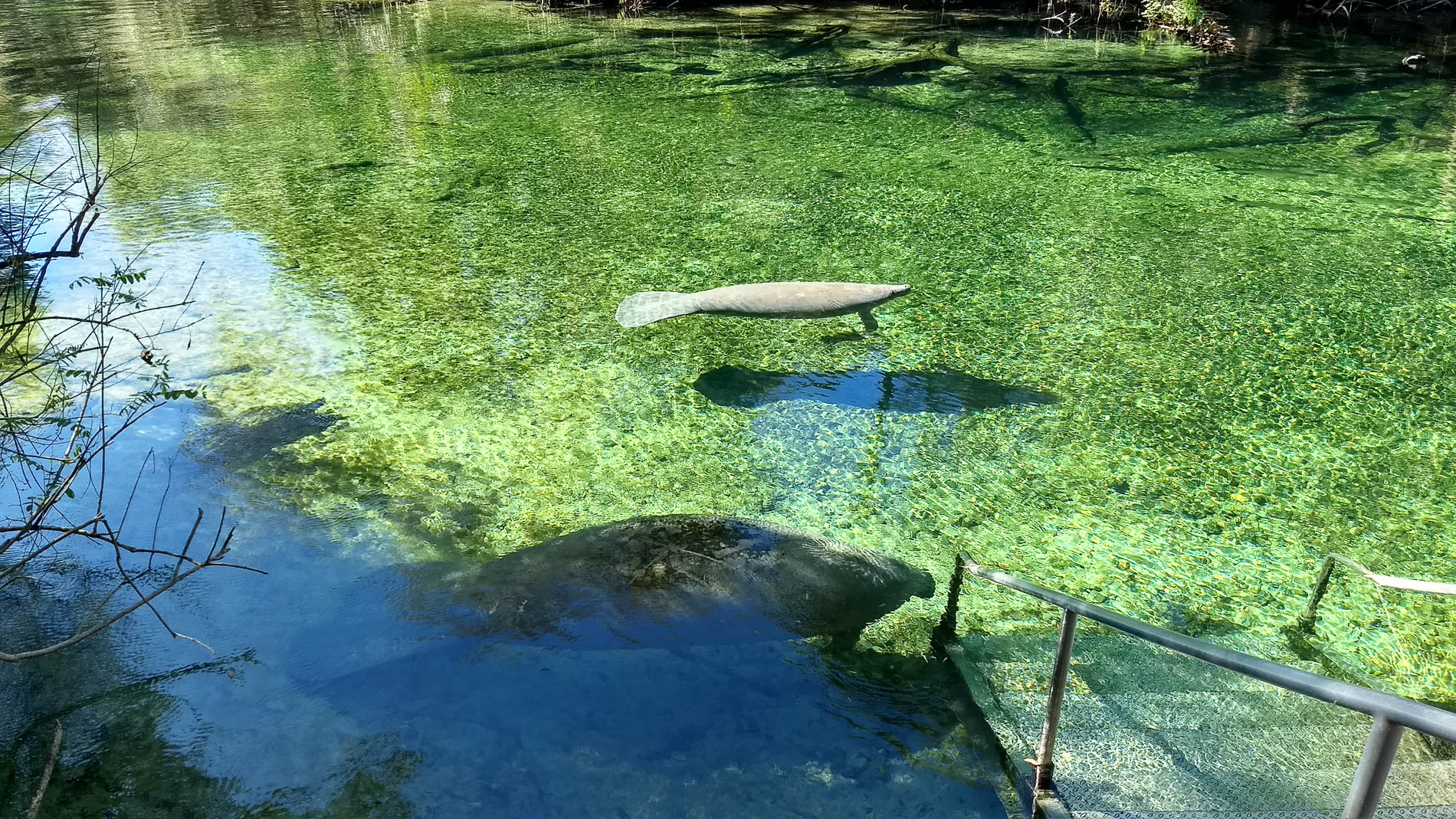
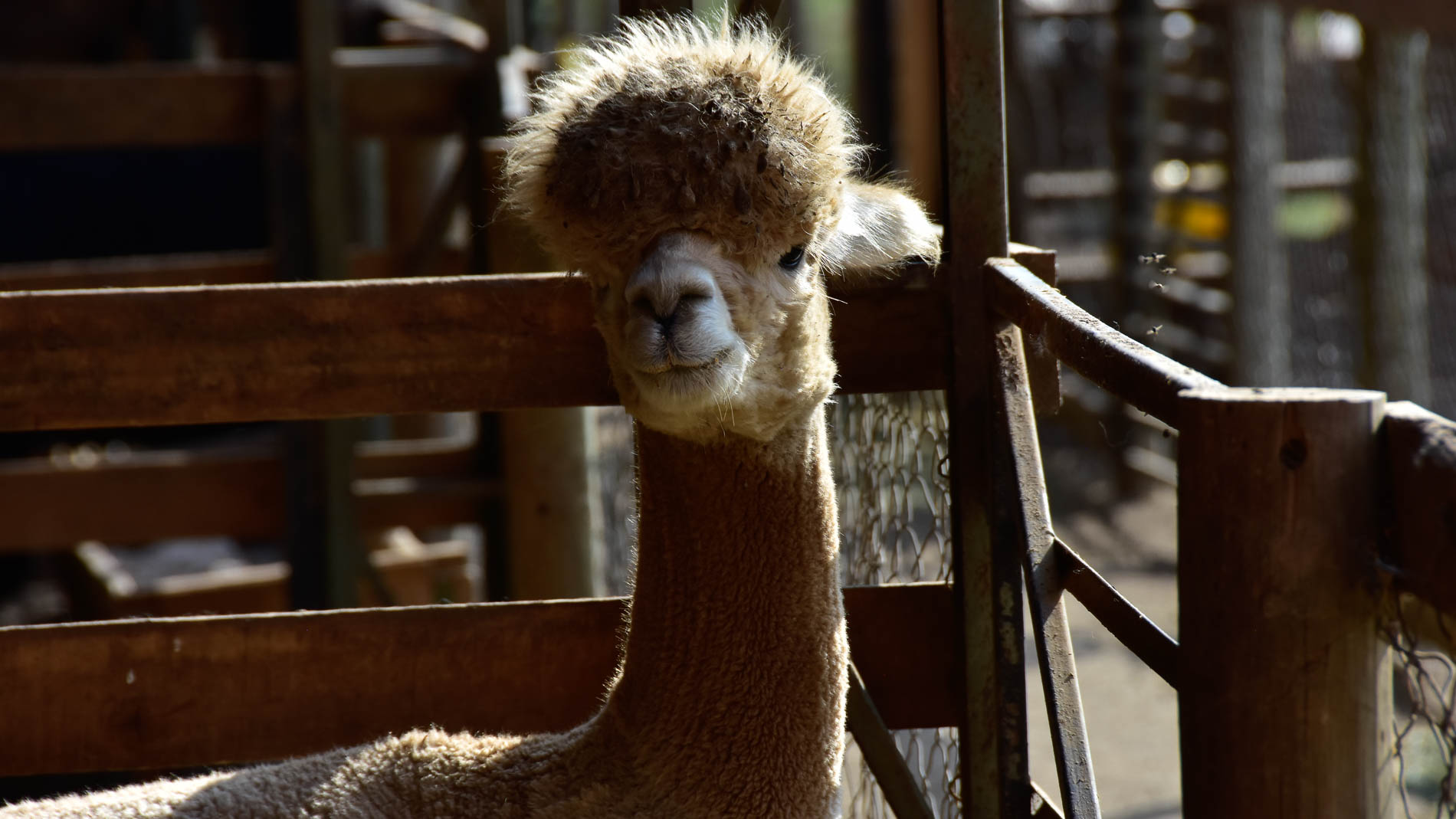


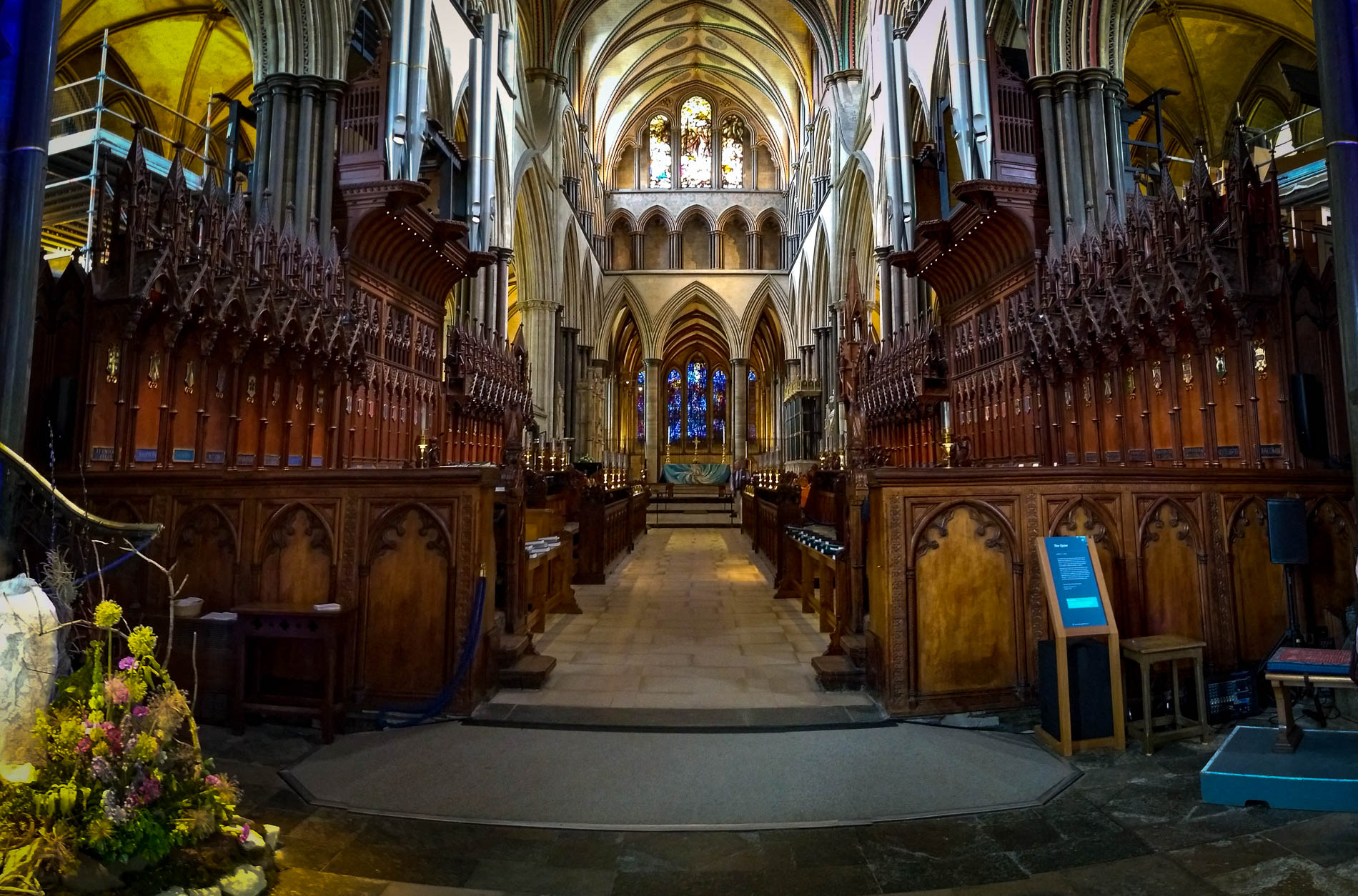


[…] several places along the way. Some of our stops included Marseille, France, Villefranche, France, Florence, the Amalfi Coast and Pompeii, in Italy, and back to […]